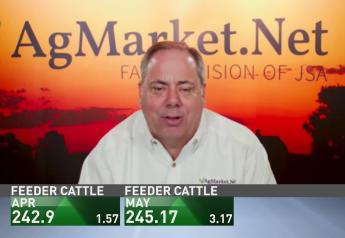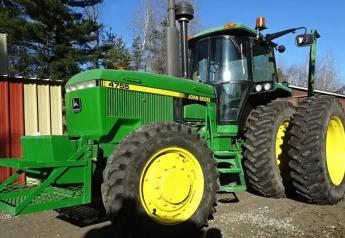What Another Drought to California Means for its Dairy Producers

The skies might be blue, but the mood of some central California dairy producers has turned grey, as another season of drought returns to The Golden State.
Recently California Governor Gavin Newsome expanded the drought emergency to 41 counties, including the Klamath River, the Sacramento-San Joaquin Delta and Tulare Lake Watershed counties.
Warm temperatures in April and early May divide this critically dry year from previous drought years. The early warm temperatures and extremely dry soils have further depleted the expected runoff water from the Sierra-Cascade snowpack, resulting in historic reductions in the amount of water flowing to major reservoirs.
The impact to California dairy farms varies from region to region, and according to Roger Herrera of Ahlem Farms located in Hilmar, his farm is one of the lucky ones. “The last couple of years the drought hasn’t impacted our water usage too much,” Herrera says. Ahlem Farms is home to two 2,500-cow dairies in Merced county that farms a total of 800 acres, all of which goes back to feed their cattle.
With the central valley area rainfall measuring just 12 inches annually, farmers heavily rely on rain from the Sierra mountains that they then can acquire to grow their crops. “Some years we receive as much 42 inches and five years ago we only received 17 inches,” Herrera adds. When Ahlems receive lesser amounts, they plant shorter, 110-day corn to try and get by. Last year they received 42 and this year received 32 inches, but Ahlems consider themselves lucky.
However, the worries are still in the hearts of Ahlems as the drought continues and the reality that their water allocations could be reduced at any time would definitely impact their farming ability.
Further south to Riverdale, dairy producer Steve Maddox of Maddox Dairy isn’t as fortunate. Maddox Dairy milks 4,000 cows, with an equal number of heifers, farms 1,600 acres of almonds and 3,000 acres of wine grapes, as well as cropland to supply feed for their cattle. “In our area, it’s pretty dramatic,” Maddox says. Part of the water system that Maddox is involved with includes the Stinson Irrigation District, and the company told its members not to expect any water this year.
Being accustomed to droughts and water restrictions, most farms in Fresno county, where Maddox Dairy is located, have their own wells. “We rely heavily on wells and surface water,” Maddox adds. “Surface water certainly will be inhibited this year.”
Ahlems, who have yet to plant corn, are in the process of pre-irrigating the fields to prepare for planting. Herrera anticipates they will be ready to turn the planter wheels in two weeks and the farm will need to irrigate five to six more times before the corn is ready to chop. Herrera anticipates their dairy will be okay on their water needs this year, utilizing every drop of the 32 inches they are allocated.
Maddox however made the hard decision to fallow a third of his 1,800 acres of corn silage cropland due to water restrictions, causing him to only farm 1,200 acres. This management procedure will require Maddox to purchase more feed in a year where purchasing feed already comes at a steep cost. “We will locate almond hulls or other feed concentrate to supplement for the loss of feed crop acreage,” Maddox reports. “Fallowing ground gives us enough water to push corn to maturity and that is what we have to focus on right now.”
Last year Maddox planted shorter day corn but was not happy with the results and reports that it took more water per ton of silage on the shorter-day corn. Utilizing locally sourced biproducts to get them by, Maddox estimates the increased purchased costs due to non-farming ground will swell his feed costs by 20-25%. Add in skyrocketing rising commodities, the impact is staggering.







